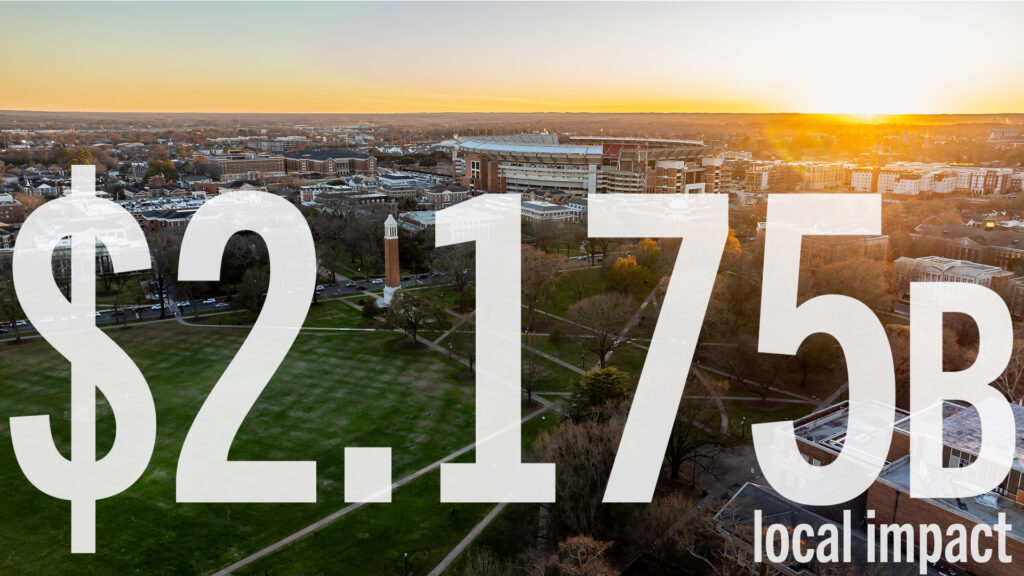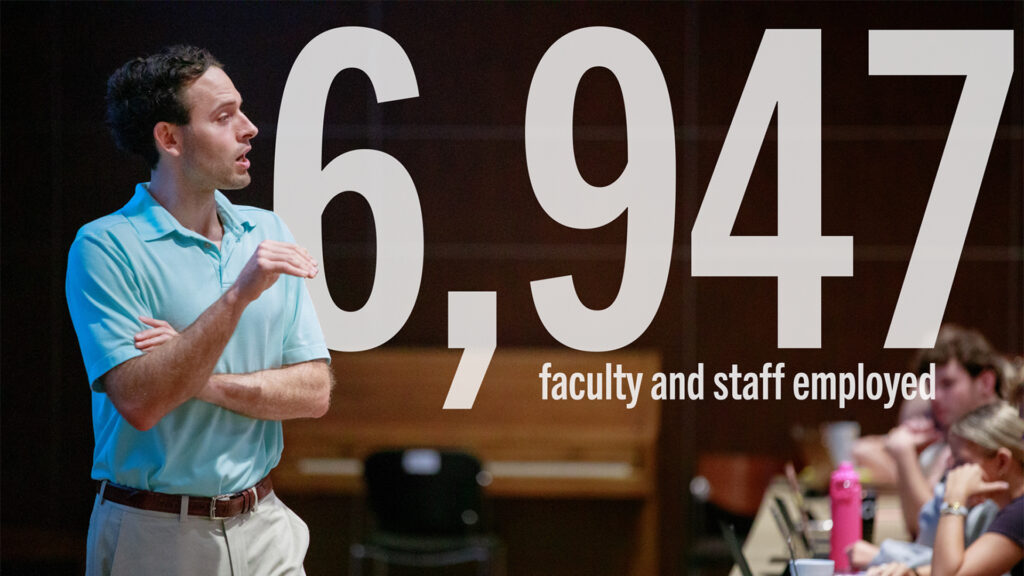TUSCALOOSA, Ala. – The University of Alabama remained steadfast and resilient in its contributions to the state with an economic impact that approached a near-record of $2.948 billion for the 2020-2021 academic year despite the declining effects of the COVID-19 pandemic on enrollment and visitor impacts.
UA had a $15.47 impact per dollar appropriated by the state to the University, according to the latest UA economic impact report conducted by the Center for Business and Economic Research in the UA Culverhouse College of Business. The state will realize an 11% annual rate of return on its investment because over their careers, the 2020-2021 graduating class will pay about $1 billion additional state income and sales taxes than they would have without their UA education.
“The University of Alabama isn’t just shaping minds; it’s shaping economies and futures,” said UA President Stuart R. Bell. “Our strategic focus goes beyond traditional education, reaching into the realms of research, service and outreach programs. We’re not just contributing to the state; we’re creating a legacy of innovation and success through our graduates and the dedicated efforts of our faculty and staff.”

State Impact
The economic analysis showed employment and fiscal impacts of 13,613 jobs, and $136.5 million in income and sales taxes. Although seating was limited at its five home football games due to the COVID-19 pandemic, the 2020 UA football season left a $134.5 million impact on the state.

Tuscaloosa Impact
UA left an economic impact of $2.175 billion, 12,853 jobs and $42.5 million in local sales tax for the Tuscaloosa metro area. The local area saw a $100 million impact from the five home football games.

Personal Investment
An education from the University proves to be a solid investment that provides real annual rates of return that range from 9.5% to 10.6% for the 2020-2021 graduating class over high school completion depending on degree level. Corresponding marginal annual rates of return among levels of degree completion ranges from 12.9% to 18.3%.
“The UA education is worthwhile and prudent from both public and private investment perspectives for the state of Alabama and the University’s students,” said Dr. Samuel Addy, associate dean for economic development outreach in Culverhouse and a senior research economist for CBER. “UA delivers tangible and intangible benefits to its graduates and the state, with positive spillovers to the nation and the world.”
Despite the challenges of the COVID-19 pandemic, UA saw an increase in the number of in-state undergraduate students and set a then-record Graduate School enrollment in fall 2020. UA also managed to avoid furloughs and cuts during this time.

UA employed 6,947 faculty and staff along with several thousand student workers during the 2020-2021 academic year. UA expenditures totaled $1.678 billion for the year.
The mission of The University of Alabama is to advance the intellectual and social condition of the people of Alabama through quality programs of teaching, research and service. UA’s significant contributions to economic, academic and community development are a direct result of the work performed by students, faculty and staff.
The University of Alabama, part of The University of Alabama System, is the state’s flagship university. UA shapes a better world through its teaching, research and service. With a global reputation for excellence, UA provides a forward-thinking environment and over 200 degree programs on a beautiful, student-centered campus. A leader in cutting-edge research, UA advances discovery, creative inquiry and knowledge through more than 30 research centers. As the state’s largest higher education institution, UA drives economic growth in Alabama and beyond.
Contact
Bryant Welbourne, UA Strategic Communications, bryant.welbourne@ua.edu, 205-348-8325
